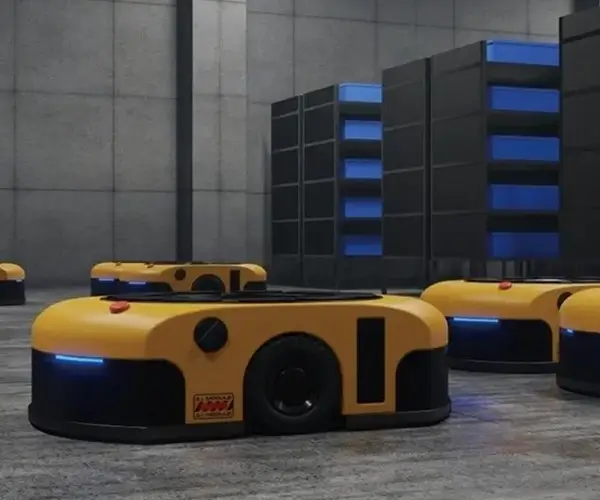Certainly! Here is the first part of the soft article centered around the theme "AC geared motor working principle." Given the depth and length required, I'll craft an engaging and detailed overview that seamlessly leads into the second part.

Unveiling the Power: How AC Geared Motors Work and Transform Industry
In the bustling world of industrial automation and mechanical engineering, AC geared motors stand out as versatile and dependable solutions for a wide range of applications. Whether it's conveyor belts, robotics, packaging machinery, or heavy-duty manufacturing, these motors are the unsung heroes that keep operations smooth, efficient, and reliable. But how exactly do they work? What makes them uniquely suited for demanding environments? Let's delve into the core principles and construction of AC geared motors, unraveling the secrets behind their impressive capabilities.
Understanding the Basics of AC Motors To appreciate how an AC geared motor operates, it's essential to first understand the foundational component: the asynchronous (or induction) motor. An AC motor, typically powered by alternating current, converts electrical energy into mechanical motion. Its working principle hinges on electromagnetic induction, discovered by Michael Faraday, where a rotating magnetic field in the stator induces a current in the rotor, creating torque and causing rotation.
The standard AC motor, in its basic form, is compact, robust, and capable of high speeds, but it lacks substantial torque at low speeds—an area where gear reducers play a vital role. That's where geared motors come into play. By integrating a gear transmission, these motors modify speed, torque, and overall performance to meet specific application needs.
The Role of the Gearbox: Torque Amplification and Speed Reduction The gearbox, or gear reducer, is the heart of the AC geared motor. It translates high-speed, low-torque electrical motor output into low-speed, high-torque mechanical power. The gear system, which can comprise spur gears, helical gears, planetary gears, or worm gears, reduces the motor's rotational speed while magnifying its torque output.
Think of a bicycle gear system: shifting to a lower gear makes pedaling easier, allowing for more force to be applied at a lower speed. Similarly, in an AC geared motor, the gearbox ensures the motor can handle heavier loads or precise movements, even at lower speeds.
By adjusting the gear ratios—the relationship between input and output speeds—the motor can be tailored to specific operational requirements, whether that means slow, deliberate movements or rapid operations with enhanced force.
Components of an AC Geared Motor An AC geared motor comprises several integrated components working harmoniously:
Stator and Rotor: These are the core electromagnetic components of the motor, creating the rotary magnetic field and inducing motion. Gearbox: A precisely manufactured assembly of gears that modifies the output speed and torque. Housing: Protects the internal components and ensures durability. Lubrication System: Keeps the gears operating smoothly, reducing wear and tear. Control System (optional): Modern AC geared motors often include electronic controllers for precise speed and position regulation.
Operation Cycle: Bringing It All Together When power is supplied to the AC motor, the stator generates a rotating magnetic field. This field induces a current in the rotor, creating its own magnetic field. Interaction between these fields produces torque, causing the rotor to turn. As the rotor spins at a certain speed (known as synchronous or slip speed), it drives the attached gearbox.
Inside the gearbox, the high-speed rotation is reduced to a more manageable, torque-rich output. This synchronized operation enables the precise control of speed and force necessary for industrial tasks.
Efficiency and Reliability Modern AC geared motors are designed with efficiency in mind. Their components are optimized to minimize energy losses—thanks to advanced gear materials, precise manufacturing, and lubrication techniques. This makes them not only powerful but also energy-conscious, a critical factor in industrial operations aiming to reduce costs and environmental impact.
Furthermore, their robustness ensures long service life. With proper maintenance—such as regular lubrication and inspection—these motors can operate reliably for years, even in challenging environments featuring dust, moisture, or extreme temperatures.
Applications and Significance The significance of AC geared motors goes beyond their mechanical prowess. They are integral to automation and precise control in manufacturing processes, offering consistent performance that’s vital for quality and efficiency. From robotic arms for assembly lines to rotating platforms in light fixtures, their versatility is unmatched.
In industrial settings, choosing the right gear ratio and motor specifications can dramatically influence a machine's performance, energy consumption, and lifespan. This customization underscores the importance of understanding the working principle behind AC geared motors—making informed decisions that align with operational goals.
As we look ahead, advancements in materials, electronics, and manufacturing techniques continue to push the boundaries of AC geared motor performance, unlocking new possibilities in automation, robotics, and beyond.
Kpower has delivered professional drive system solutions to over 500 enterprise clients globally with products covering various fields such as Smart Home Systems, Automatic Electronics, Robotics, Precision Agriculture, Drones, and Industrial Automation.




































